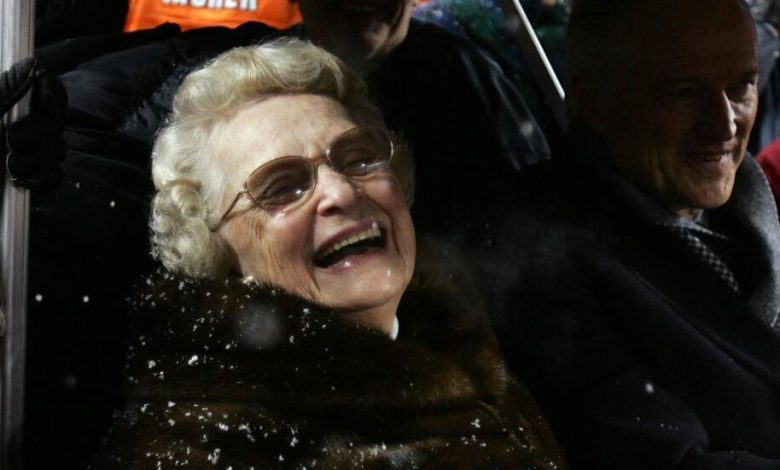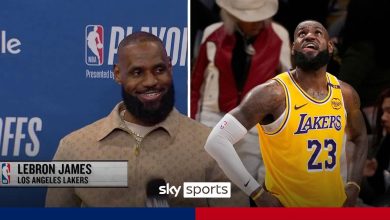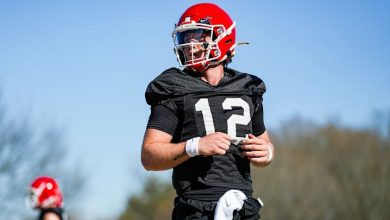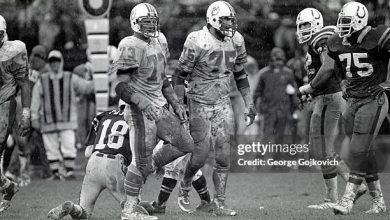Chicago Bears Ownership Structure: The Death of Virginia McCaskey Makes Room for the Next Generation

The Chicago Bears have long been one of the most iconic franchises in the National Football League (NFL). Their legacy is intertwined with the Halas-McCaskey family, whose ownership spans multiple generations. Virginia Halas McCaskey, the eldest child of George Halas, the founder of the Bears, held the reins of the team for much of her life, shaping the Bears into the franchise they are today. McCaskey’s passing at the age of 102 in early 2025 marked the end of an era for the Bears, a pivotal moment in both the history of the franchise and the broader narrative of professional sports ownership.
The death of Virginia McCaskey has raised important questions about the future of the Bears, including the transition of ownership and how the team will be managed moving forward. As the Bears enter a new chapter under new leadership, it is important to explore the ownership structure of the franchise, the legacy that Virginia McCaskey leaves behind, and what this means for the future of the Bears. The transition of power in sports franchises, especially one with such deep historical ties, is never simple, and the Bears’ ownership shift will likely have a significant impact on the team and its direction.
The Legacy of Virginia McCaskey and the Halas-McCaskey Family
Virginia Halas McCaskey was born in 1923, the only daughter of George Halas, the legendary founder of the Chicago Bears. Halas, often referred to as “Papa Bear,” not only established the team but also played a significant role in the development of the NFL itself. He was a coach, player, and owner, and under his leadership, the Bears became one of the league’s most successful and storied franchises.
When George Halas passed away in 1983, ownership of the Bears passed to his family. Virginia McCaskey, who had been actively involved in the family business and was deeply passionate about the Bears, became the matriarch of the franchise. McCaskey’s role as owner was largely behind the scenes, as she wasn’t involved in day-to-day football operations. Instead, she worked as the steward of the family legacy, ensuring that the team stayed in the Halas-McCaskey family.
During McCaskey’s tenure as the team’s owner, the Bears had their share of success, including the 1985 Super Bowl win, but the franchise also went through long periods of struggle. Despite these ups and downs, McCaskey’s commitment to the team never wavered, and she remained a highly respected figure within the Bears organization. Virginia’s leadership allowed the Bears to maintain a strong presence in the NFL, preserving the Halas family’s connection to the franchise and its storied history.
As McCaskey aged, attention naturally shifted to the next generation of the family. Who would carry the torch after Virginia? Would the next generation continue her approach of preserving the family legacy, or would the team be modernized in ways that align with today’s NFL business environment?
The Ownership Structure of the Chicago Bears
The ownership structure of the Chicago Bears has always been unique. The Halas-McCaskey family has held full ownership of the team since its inception in 1919, and the family has maintained that control through generations. Unlike many other NFL teams, where ownership often changes hands due to financial difficulties or sales, the Bears have remained a family-operated business.
The ownership of the Bears is divided among Virginia McCaskey’s children and their descendants. While McCaskey was the head of the ownership group, control was shared among the McCaskey children, many of whom were involved in the operations and decision-making of the team. At various points, other family members have held titles such as chairman of the board or CEO, but Virginia’s role as the team’s principal owner remained unchallenged until her passing.
The family’s control structure allowed the Bears to avoid some of the financial issues that have plagued other franchises. While the team experienced occasional setbacks on the field, the Bears’ financial position remained strong, partly because of the family’s long-standing commitment to maintaining ownership within the Halas-McCaskey clan.
Following Virginia’s death, the question arises as to how the team will continue to operate. The structure of the Bears’ ownership will likely remain within the family, but leadership could change hands as the next generation assumes greater responsibility.
The Transition of Ownership: A Shift in Control
With Virginia McCaskey’s passing, the leadership of the Chicago Bears has passed into the hands of the next generation of McCaskeys. While the exact details of the transition are not fully known, it is expected that one or more of Virginia’s children or grandchildren will take over the day-to-day control of the team. As with any family business, the next generation’s approach to leadership will be crucial in shaping the team’s future direction.
One of the most important questions facing the McCaskey family is whether the new leadership will continue Virginia’s more traditional, behind-the-scenes approach to ownership or take a more hands-on role in the team’s operations. There have been various members of the McCaskey family involved in the team’s management, including Virginia’s sons and daughters, but the next generation could bring a fresh perspective to the organization.
Some family members, like her son George McCaskey, have already been involved in the team’s leadership in various capacities. George McCaskey has served as the team’s chairman, and his involvement in decision-making has been crucial in the Bears’ recent direction. It is possible that George or one of his siblings could assume a larger role following Virginia’s death, potentially becoming more active in decisions regarding team operations and personnel.
Another possibility is that a new face from within the family could step forward to lead the Bears. It is common in family-run organizations for younger members to take on more responsibilities as older generations step back. The next leader of the Bears may bring new ideas and initiatives to the table, perhaps with a focus on modernizing the franchise and aligning it with the demands of the contemporary NFL.
While it is unlikely that the Bears will look outside the family for new ownership, the future leadership structure could involve a more decentralized approach. The McCaskey family may choose to appoint a team president or CEO to handle the business side of things while a more hands-on family member remains involved with the football side of operations. This dual approach could allow the Bears to maintain the family-oriented leadership that has been a hallmark of the franchise, while also bringing in outside expertise to ensure the team remains competitive in the modern NFL.
What Does This Mean for the Chicago Bears Moving Forward?
The passing of Virginia McCaskey marks a turning point for the Bears, and how the team moves forward will be shaped by the leadership transition within the family. Several key questions will determine the future of the franchise:
1. How Will the Bears Address the Business Side of Operations?
The business side of running an NFL team has grown exponentially in recent decades. From sponsorships and media rights to stadium operations and fan engagement, modern NFL teams are complex business entities. The McCaskey family will need to ensure that the Bears remain competitive in this rapidly changing business environment.
It is likely that the next generation of leadership will have to lean more on outside expertise in handling the team’s business operations. Whether that means bringing in executives with experience in finance, marketing, or stadium management, the Bears will need to modernize how they approach their business operations while staying true to their family values.
2. What Direction Will the Team Take on the Field?
On the field, the Chicago Bears are in the midst of a rebuild. The team has struggled in recent seasons, but they have key players like quarterback Justin Fields and a promising young core. The future direction of the team’s football operations will depend on how the McCaskey family chooses to allocate resources and approach team-building.
Will the new leadership prioritize continuity, or will they look to make sweeping changes? This will likely depend on how much influence Virginia McCaskey had over football operations in the final years of her ownership and whether the next generation will follow her conservative approach or look to reshape the team’s strategy.
3. Will the Bears Pursue a New Stadium?
One of the most significant decisions facing the new owners of the Bears is whether to pursue a new stadium. The team’s current home, Soldier Field, is one of the oldest stadiums in the NFL and has been a point of contention for many years. The city of Chicago and the Bears have been at odds over stadium renovations and upgrades, and some family members may push for a new home for the team.
A new stadium could offer the Bears an opportunity to increase revenue and create a more modern fan experience. The next generation of leadership will need to decide whether to continue pursuing a new stadium deal, a decision that will have long-term implications for the franchise.
Conclusion
The death of Virginia McCaskey in early 2025 marked the end of an era for the Chicago Bears. Under her stewardship, the Bears remained a family-owned and operated franchise, preserving the legacy of George Halas and maintaining the team’s unique position in NFL history. However, with McCaskey’s passing, the next generation of the McCaskey family is now poised to take over the franchise.
As the Bears move forward, the decisions made by the new leadership will shape the future of the franchise. Whether the family continues with Virginia’s more traditional approach or embraces a more modern, hands-on style of management, the Bears are entering a new chapter. How the McCaskey family handles the ownership transition, both on and off the field, will determine whether the team continues to build on its rich history or enters a new era of success in the NFL.









